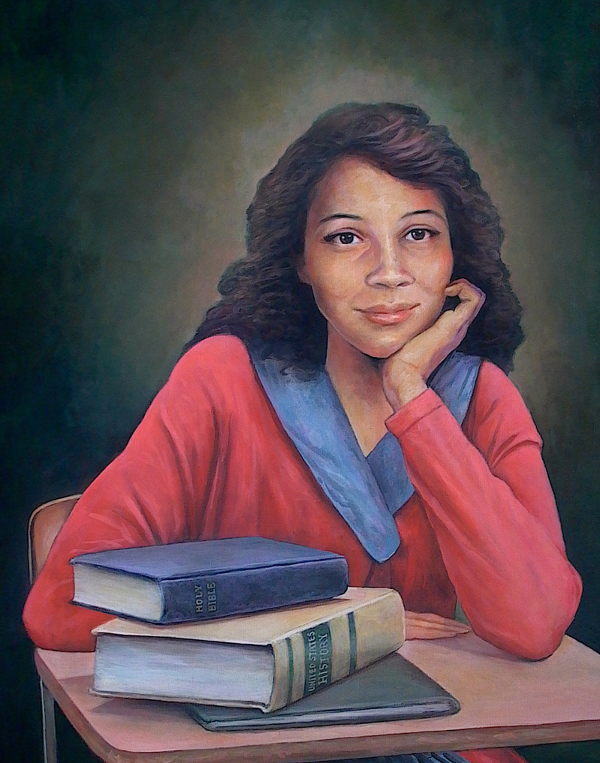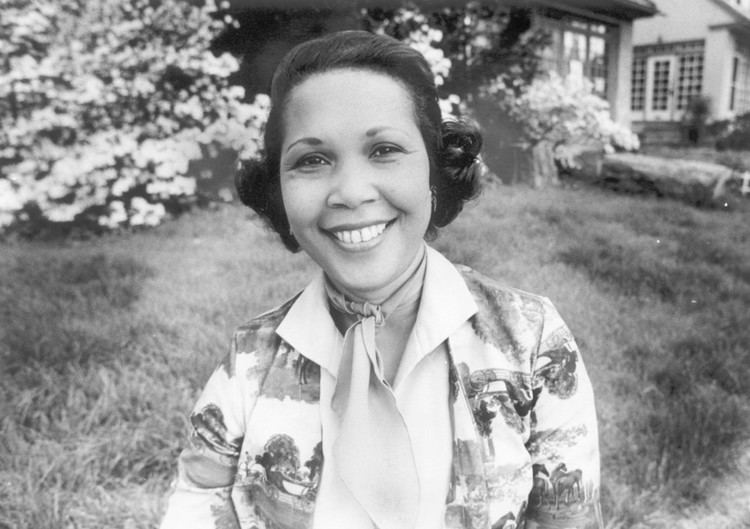Name Barbara Johns | ||
 | ||
Died 1991, Philadelphia, Pennsylvania, United States Known for Davis v. County School Board of Prince Edward County, R.R. Moton High School | ||
U.S. Rep. Tom Garrett Celebrates the Legacy of Civil Rights Pioneer Barbara Johns
Barbara Rose Johns Powell (born March 6, 1935– died September 25, 1991) was a young, American civil rights leader-pioneer and the niece of one of the "fathers of the Civil Rights Movement," Vernon Johns. On April 23, 1951, at the age of 16, Powell led a student strike for equal education at R.R. Moton High School in Farmville, Prince Edward County, Virginia. After securing NAACP legal support, the Moton students filed Davis v. Prince Edward County, the largest and only student initiated case consolidated into Brown v. Board of Education, the landmark 1954 U.S. Supreme Court decision declaring "separate but equal" public schools unconstitutional.
Contents
- US Rep Tom Garrett Celebrates the Legacy of Civil Rights Pioneer Barbara Johns
- To Take a Walk Barbara Rose Johns
- Early life
- Moton High School
- Organizing the strike and filing suit
- After the strike
- Activist legacy
- Additional reading
- References

To Take a Walk: Barbara Rose Johns
Early life

Barbara Rose Johns Powell was born in New York City, New York in 1935. Her family had roots in Prince Edward County, Virginia, where they returned to live. Her mother worked in Washington D.C. for the U.S. Navy, and her father operated the farm where the family resided. The eldest of five children, Powell had a younger sister, Joan Johns Cobbs, and three younger brothers: Ernest; Roderick, who served in Vietnam as a dog handler and was awarded the Bronze Star and Purple Heart; and Robert.

Powell’s uncle was the prominent Vernon Johns, an outspoken activist for civil rights. When he visited Powell and her family, he would ask the children questions about black history. This motivated Powell and her siblings to study black history, and Powell, as well as her siblings, was influenced by Vernon and his outspoken nature.
Moton High School

While living in Prince Edward County, Powell was educated in segregated public schools. In 1951, 16-year-old Barbara Johns was a junior at the all-black Moton High School in Farmville. Across town was another school, open exclusively to white students. The resources available to each school, and the quality of the facilities, were unequal. Powell’s school was designed and built to hold roughly 200 students, though by 1951 enrollment was twice that number. According to a first-person account from Powell’s sister, Joan:
In winter the school was very cold. And a lot of times we had to put on our jackets. Now, the students that sat closest to the wood stove were very warm and the ones who sat farthest away were very cold. And I remember being cold a lot of times and sitting in the classroom with my jacket on. When it rained, we would get water through the ceiling. So there were lots of pails sitting around the classroom. And sometimes we had to raise our umbrellas to keep the water off our heads. It was a very difficult setting for trying to learn.
Parents of the black students appealed to the all-white school board to provide a larger and properly equipped facility. As a stopgap measure, the board erected several tar paper shacks to handle the overflow of students. Powell was frustrated with the separate and unequal facilities and decided to take action after missing her school bus and watching a bus for the white students pass her. She approached a trusted teacher to voice her concerns and the teacher prompted her to take action.
Organizing the strike and filing suit
Powell met with several classmates and they all agreed to help organize a student strike. On April 23 1951 the plan Powell initiated was put into action. The principal of the school was tricked into leaving by being told that some students were downtown causing trouble. While the principal was away, Barbara Johns forged a memo from that principal telling the teachers to bring their classes to a special assembly. The teachers brought their classes and left the assembly per request. She then delivered a speech to all 450 students, revealing her plans for a student strike in protest of the unequal conditions of the black and white schools. The students agreed to participate, and on that day they marched down to the county courthouse to make officials aware of the large difference in quality between the white and black schools. Powell had hoped that the strike would end with the county officials sympathizing with the students and building them a new school, but was instead met with indifference and struggle.
While the strike was being carried out Powell and other fellow students sought legal counsel from the NAACP (National Association for the Advancement of Colored People). The NAACP agreed to assist as long as the suit would be for an integrated school system, and not just equal facilities. A month later, the NAACP filed Davis v. County School Board of Prince Edward County in federal court. The court upheld segregation in Prince Edward County, and the NAACP appealed to the U.S. Supreme Court. Davis v. Prince Edward County, along with four other cases, became part of the case Brown v. Board of Education. As Davis was the only case in Brown initiated by student protest, it is seen by some as the beginning of the Civil Rights Movement.
After the strike
Shortly after the strike, Powell’s parents, fearing for her safety, sent her to Montgomery, Alabama to live with her uncle. After the strike, Powell lived out the rest of her life in relative peace. She married William Powell and raised five children. Her commitment to education moved her to become a librarian. She served in this profession until her death in 1991.
Activist legacy
Barbara Johns' contribution to civil rights is often overlooked because she was a teenager when she made a difference. In the Pulitzer Prize-winning Parting the Waters: America in the King Years, 1954–63, the author Taylor Branch remarks upon Davis v. Prince Edward:
The case remained muffled in white consciousness, and the schoolchild origins of the lawsuit were lost as well on nearly all Negroes outside Prince Edward County. ... The idea that non-adults of any race might play a leading role in political events had simply failed to register on anyone — except perhaps the Klansmen who burned a cross in the Johns' yard one night, and even then people thought their target might not have been Barbara but her notorious firebrand uncle.
The Virginia Civil Rights Memorial was opened in 2008, with Powell and several other students prominently featured on one side with the quote "It seemed like reaching for the moon." The Library of Virginia also honored Powell in 2005 by naming her one of their Virginia Women in History.
In 2017 Governor Terry McAuliffe officially named the Office of the Attorney General after Powell, for her impact on the civil rights movement.
